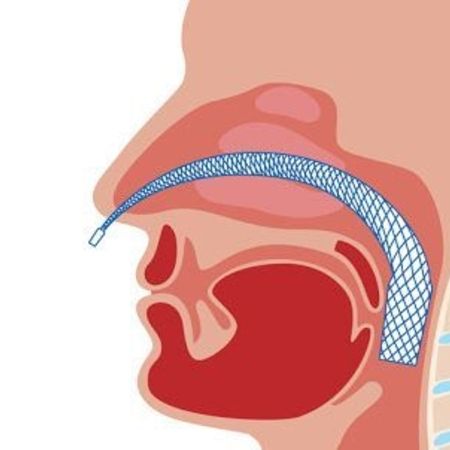- Mon - Thu:
- 08:30 - 12:00, 14:30 - 18:00
- Fri:
- 08:30 - 12:00
- Mon - Tue; Fri:
- 08:30 – 12:00
- Wed:
- 14:30 – 18:00
- Mon - Fri:
- 08:30 – 10:30
(Capacity limited – we ask that you register by telephone)
Snoring treatment
We will examine you as a specialist for sleep-related breathing difficulties and provide you with comprehensive advice and a treatment plan with a cost outline.
The preliminary exam includes an endoscopy of the nose, throat and larynx, a polygraphic test (sleep screening) as well as, where applicable, X-ray image of the paranasal sinuses, an allergy test, rhinomanometry (measurement of nasal breathing) and a lung function test (spirometry).
Conservative snoring treatment
- In cases of excess weight, we recommend weight loss.
- Alcohol should be avoided before going to sleep, as well as taking meals late at night.
- Tranquillisers or sleeping pills as well as anti-histamines may cause snoring and should be avoided if possible.
- Sleeping with the upper body in an elevated position reduces snoring.
- Sleeping while lying face up should be avoided at all costs. Sewing a tennis ball into the back of your pyjamas may help!
- It is important to set up a good sleep routine. This means creating a quiet environment, ventilating the bedroom, keeping a regular sleep rhythm, not taking any “worries” to bed, etc.
- Mandibular splints for the lower jaw: these work by moving the lower jaw forwards in order to open the upper respiratory tract, thus reducing the flow velocity of the air being breathed. This effect may lead to a reduction or elimination of obstructive sleep apnoea and the annoying snoring noises. We also offer splint adjustment as a service in our practice.
- The medical supply trade additionally offers various tools to influence the sleep position, keep the jaw in a certain position (e.g. chin strap) or improve nasal breathing (nasal strips or nose clips). Nevertheless, their success is quite moderate.
- The Alaxo stent: this is a tube-shaped soft mesh which the patient him or herself inserts at night and removes in the morning. This stent is attached to the wall of the throat and acts as a mechanical splint to prevent the respiratory tract from closing.
Minimally invasive snoring therapies
Soft palate
During waking hours, the complete throat area is under muscular tension and is open wide. During sleep however, the tissue relaxes and goes limp. Since the lungs create a slight vacuum in the respiratory tract on each inhalation, the limp tissue is further contracted by the vacuum air flow and narrows the respiratory tract even more. Turbulence occurs at the narrow points, which in turn leads to vibrations. These vibrations can be heard as the typical “snoring” sound. The effect is similar to that of a curtain blowing in the wind in front of an open window.
In minimally invasive RFITT (“Radio Frequency-Induced Interstitial Thermotherapy”), the soft palate is gently tightened without removing tissue or damaging the mucous membrane. A fine probe is inserted into the soft gums and the soft palate. This is used to supply dosed radio frequency energy. The tissue is “moistened” in the process and a scar is formed. Thus, the volume is reduced and the gums are tightened. At the same time, the soft palate may be reduced or the tongue base and nasal concha made smaller. By using a special probe in a target manner, it is possible to insert scars in exact locations deep in the tissue. This brings about a shrinking effect and therefore a tightening or a reduction in volume.
This modern surgical procedure is not damaging to the tissue (no wound area, fast healing) and can be carried out on an outpatient basis. Applied by a specialist, this innovative technique is a precise and elegant procedure which is extremely efficient and has outstanding success rates. The swallowing difficulties are tolerable and will fade away after a few days. This gentle operation is both time-saving and cost effective, as it requires no long hospital stays and the patient recovers quickly.
Uvula hyperplasia (“oversized uvula”)
A oversized and swollen uvula hinders the airflow in the upper respiratory tract and is a partial cause of the vibration noises. The resultant narrowed air passage can often be detected even in the waking state.
In RAUP (radio frequency-assisted uvula palatoplasty), the surplus mucous membrane tissues on the soft palate, which have the effect of a web and cause the snoring sound during sleep, are removed with no bleeding or local burning.
This is because the uvula must be intact for the swallowing mechanism to be in working order. In this minimally invasive method, the radio frequency energy is dosed optimally using electrodes as fine as hairs, enabling the tissue to be removed in a targeted manner.
As a result, the tissue tightens and the uvula is lifted. Fluttering movements can be reduced to a minimum and the air flows through the throat area again with low noise and no obstruction.
Hyperplasia of the tongue base (“oversized tongue base”)
An oversized tongue base can be found in about 60% of snorers and 100% of people with sleep apnoea. It is assumed that in sleep apnoea sufferers, after the shortness of breath phases, gastric acid is sucked up into the mouth and this reflux is the reason for a reactive change of the tongue base tissue over the long term.
In minimally invasive RFITT (“Radio Frequency-Induced Interstitial Thermotherapy”), the excess tissue at the tongue base is punctured using a small electrode. This changes the cell protein, it “coagulates”. The tissue is not removed using a scalpel or a laser. Instead, it is left intact. Only the treated areas are removed step-by-step in a natural manner. The medical term for this is “tissue volume reduction”.
This intervention at the tongue base is one of the most demanding and effective in the treatment of snoring and sleep apnoea and requires a maximum of experience in the specialist. In the process, the mucous membrane in the throat and vocal cords are handled with the utmost care!
More invasive snoring surgeries
Other procedures include
- Partial resection of the base of the tongue
- Hyoid suspension (tongue bone on the thyroid cartilage is held in place)
- Keyhole surgery to correct lower and upper jaw misalignments








